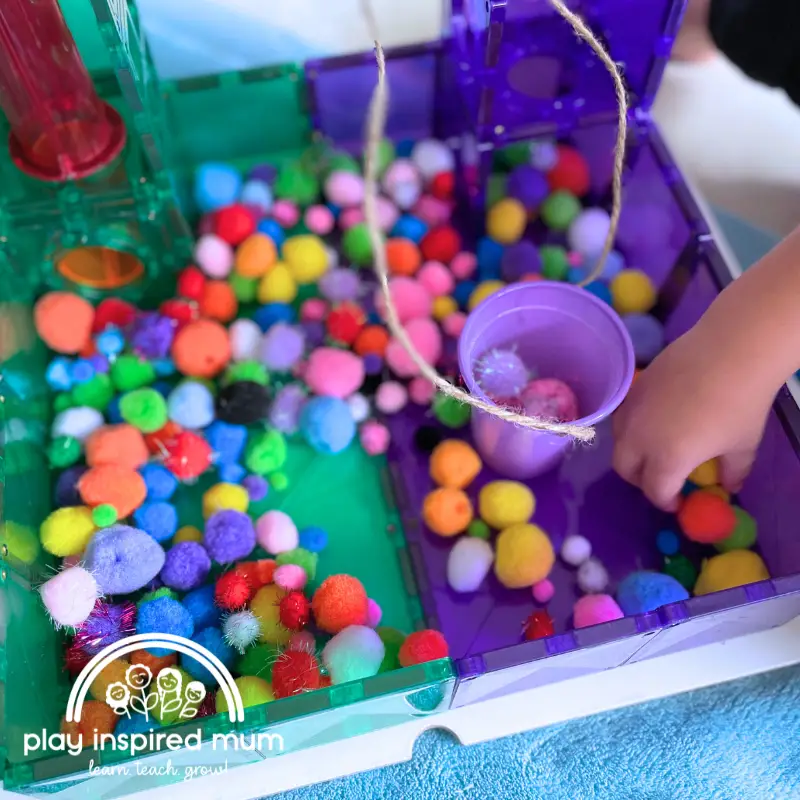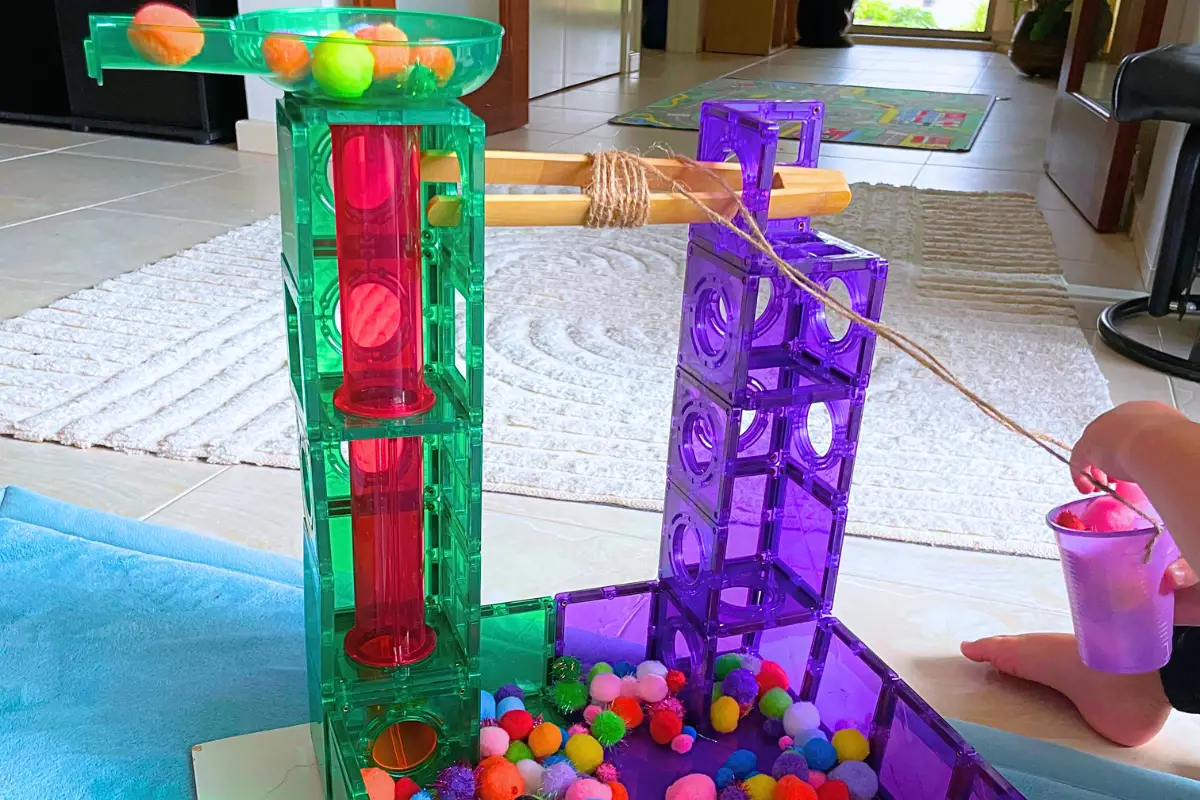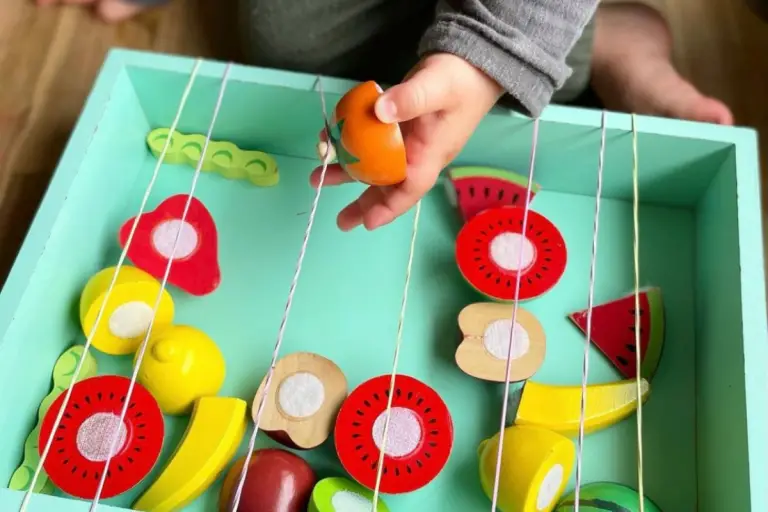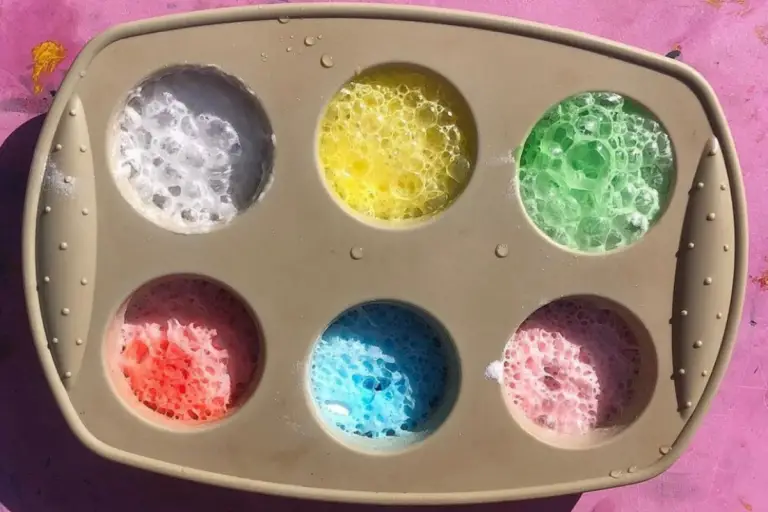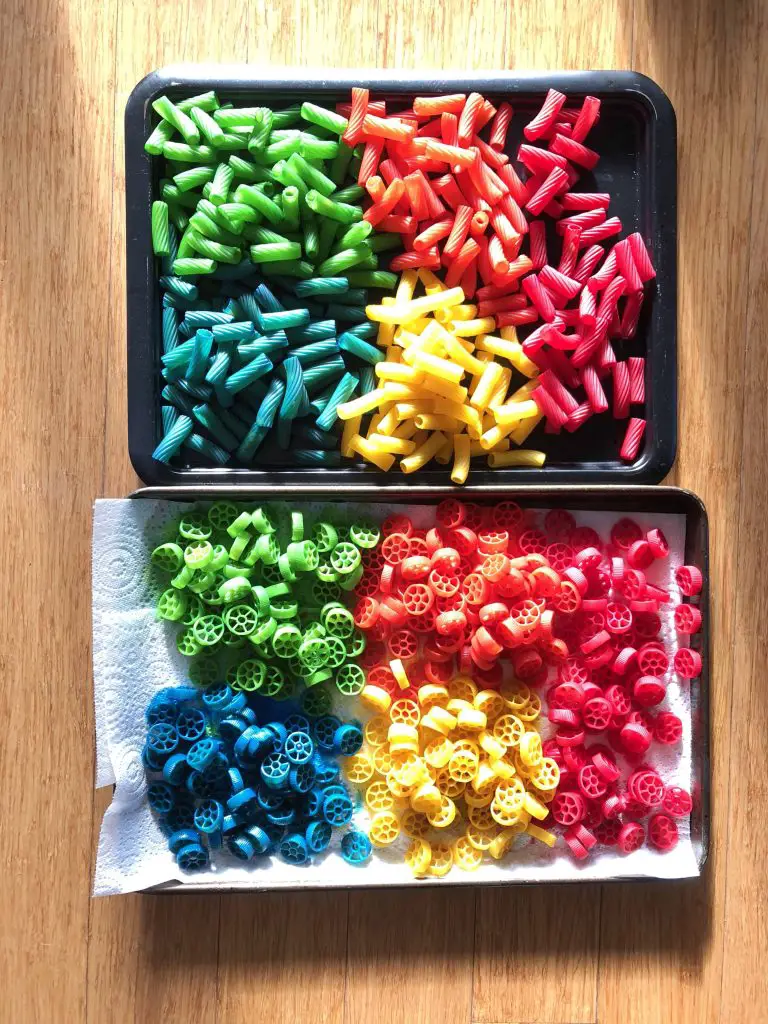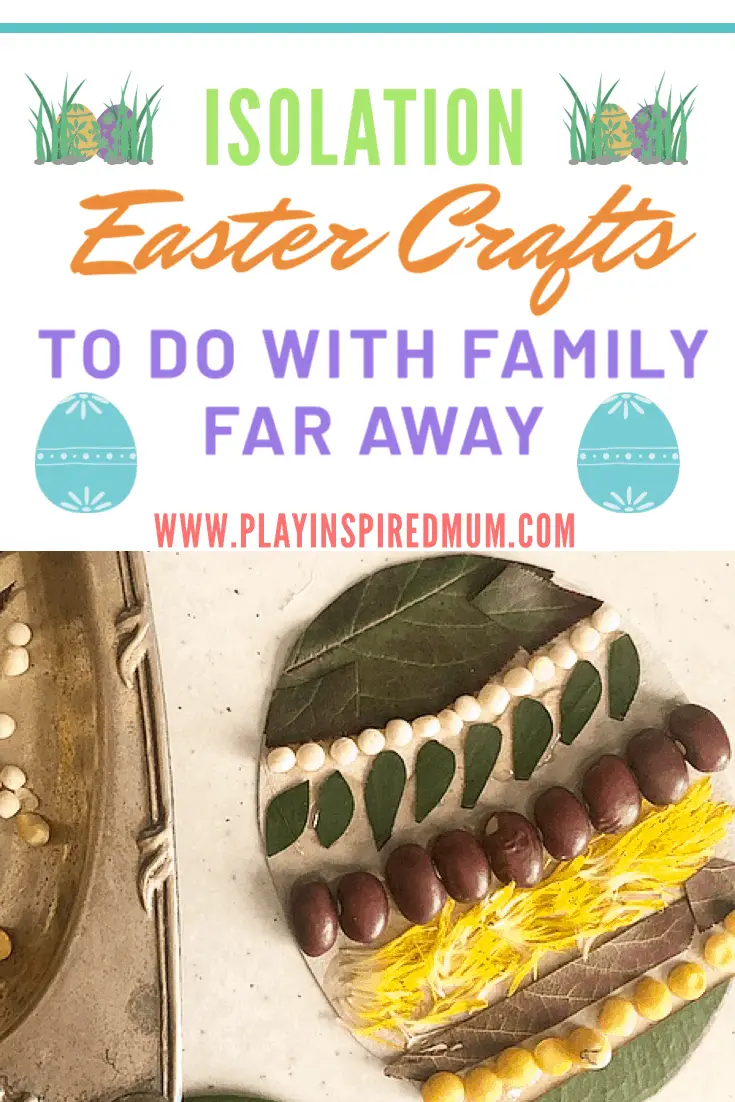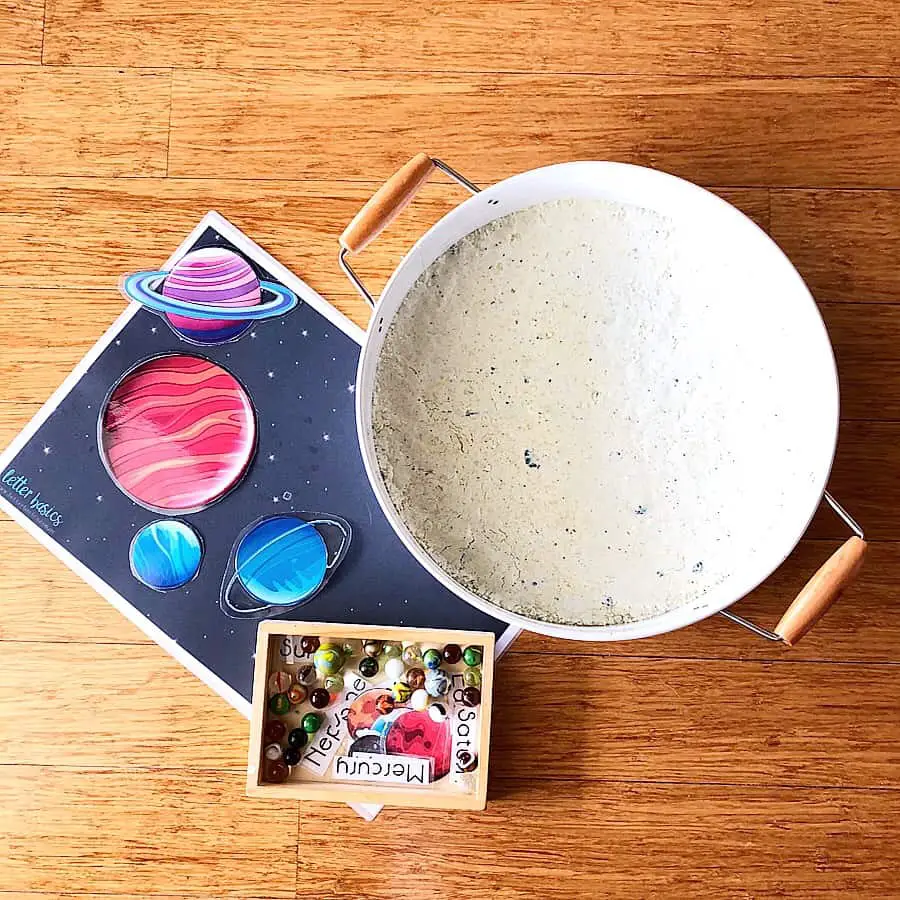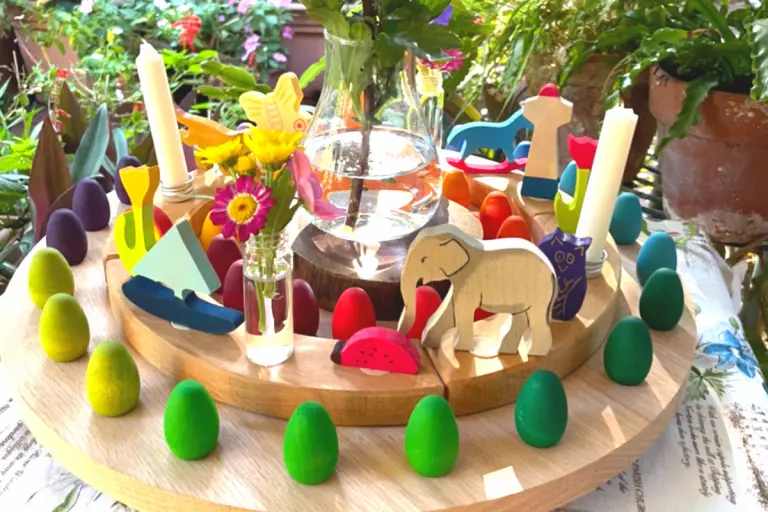How to Build a Magnetic Tile Pulley
Disclosure: This blog contains affiliate links which I may earn a small commission from if you purchase through them, at no extra cost to you.
In this article, you will learn how to build a magnetic tile pulley system.
This is a simple (and fabulous) way to bring some physics and STEM into your child’s play.
We were inspired by Mr 2s current favourite book featuring a crane with its long boom. Using magnetic tiles and some household materials, we created our own pulley system.
Creating a pulley system is a fun and educational activity for kids that can teach them about simple machines and how they work.
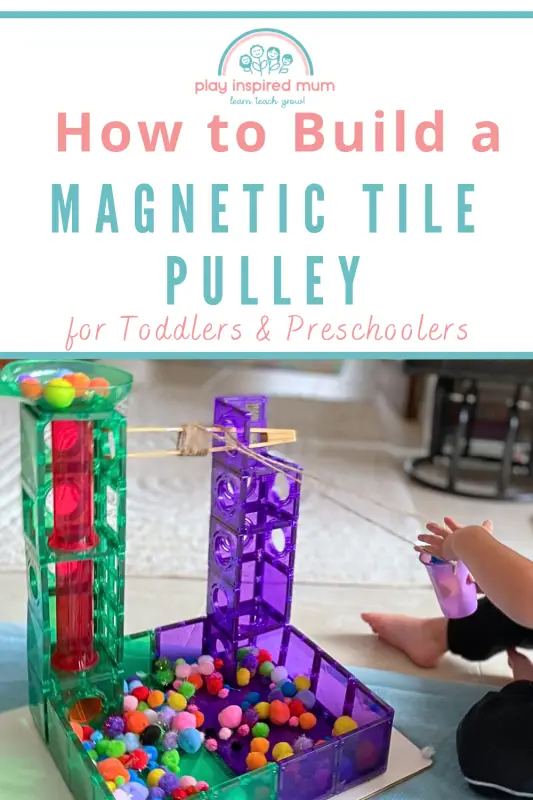
How to build a magnetic tile pulley system
Building a pulley system using magnetic tiles is a fun and creative way for kids to explore simple machines and engineering concepts.
Magnetic tiles are super cool open ended toys that have magnets on their edges and come in all sorts of shapes and colours.
You can use them to build all kinds of things, like buildings, vehicles, animals, and so much more.
They’re really popular with kids because they can let their imaginations run wild and make all kinds of cool designs.
Plus, playing with magnetic tiles can help kids get better at solving problems, thinking creatively, and understanding how things work.
And the best part is, they’re super fun to play with and can keep your child (and you) entertained for hours!
Magnetic tiles are always a win on any given day. A build having moving parts adds that extra wow factor.
Here is how we built our pulley.
What you need to build a magnetic tile pulley
- Magnetic tiles
- String
- Spool
- Cup
- Tape
- Material to play with
- Base (optional)
Now, when it comes to magnetic tiles, experience has taught me they are not created equally. We have some cheaper tiles and they just don’t have the same strength as the high end tiles.
In saying that, magnetic tiles are such an incredible, open ended resource.
If your budget says no to high end, there is still plenty of fun to be had with the cheaper tiles.
Our favourite tiles are Learn & Grow and Connetix tiles.
Don’t ask me to choose which is our favourite because… well you wouldn’t ask which was my favourite kid would you?
They are both amazing!
The magnets are strong for tall, sturdy builds.
The plastic has proven hard wearing and the engineering is second to none.
We used both traditional style tiles and ball run tiles for our build.
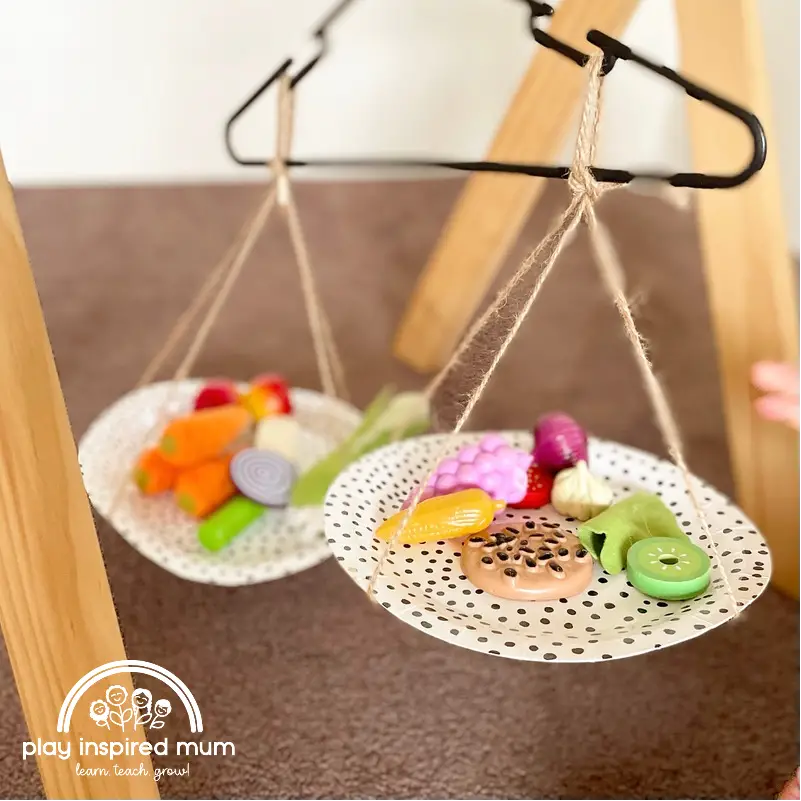
Adding a chute was a must to extend conversations we had while reading a book this afternoon.
While we had planned on using cardboard tube as a spool, it was too wide. So, we settled with using wooden tongs.
In hindsight, we could have just cut the length of the cardboard tube and rolled it over itself to fit… isn’t hindsight a wonderful thing?
The base we used was a board from our flisat table.
We love playing on our relax mat however it does make sturdy builds challenging so the flisat board has been a game changer for our magnetic tile play.
As a material, Mr 2 chose pom poms. I had gone into our sensory play box to get dried beans however when I asked what he preferred, pom poms were the winner. You could also use:
- Coloured rice
- Dried pasta
- Gravel
- Dried beans
- Gumnuts

How to build a magnetic tile pulley
- Create your base form. We used four base plates to create the form base. We then built one tile high to make a tray to catch and contain the pom poms.
- Build the towers. We built four tiles high above the base form. We built a ball run chute down one side and the other was left empty. The top inner tile on both sides was a ball run tile with a hole to hold the spool.
- Fit the spool. Simply fit the spool between the two towers, leaving one end out far enough that it can be turned.
- Fit to the cup. Cut a length of string to fit to the cup. This needs to be long enough to travel the distance from the spool to the base plate, times two. Tape one end to the top lip of the cup. Then fit the middle of the string to the spool using the tape. Finally, secure the other end of the string to opposite side of the cup.
- Add material. Pour your material into the base form and you are ready to test out your magnetic tile pulley.
- Time to explore! Turn your spool to make the cup travel up and down. We filled the cup with pom poms before raising it to the top of the tower to pour them into the chute. Mr 2 loved watching the cup moving up and down, before pouring the pom poms down the chute. He found one super sized pom pom that blocked the chute. It became a game to have the chute blocked and have to take the tube apart to unblock it before putting it back together again.
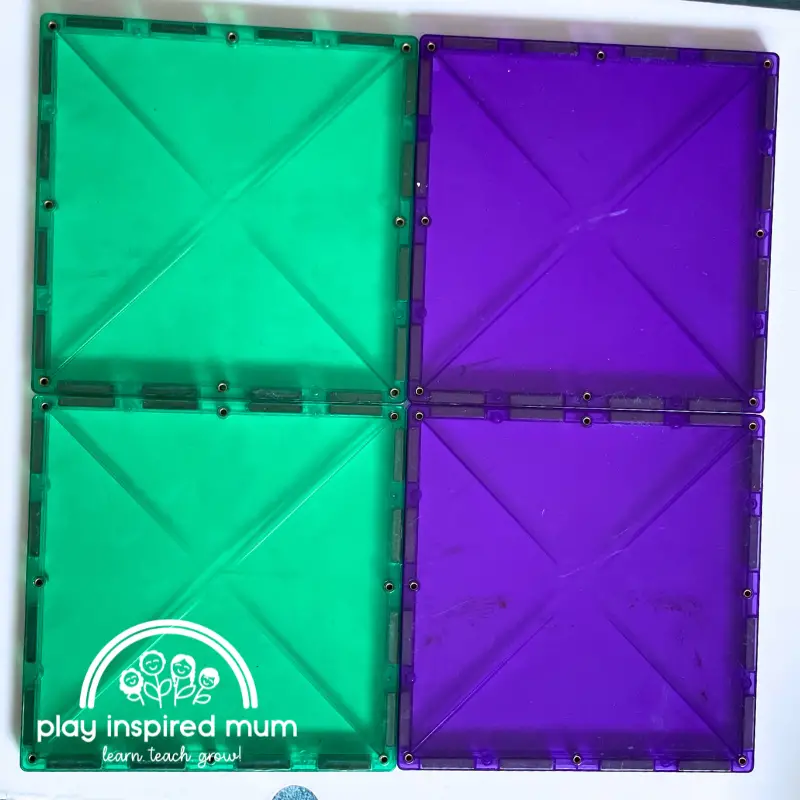
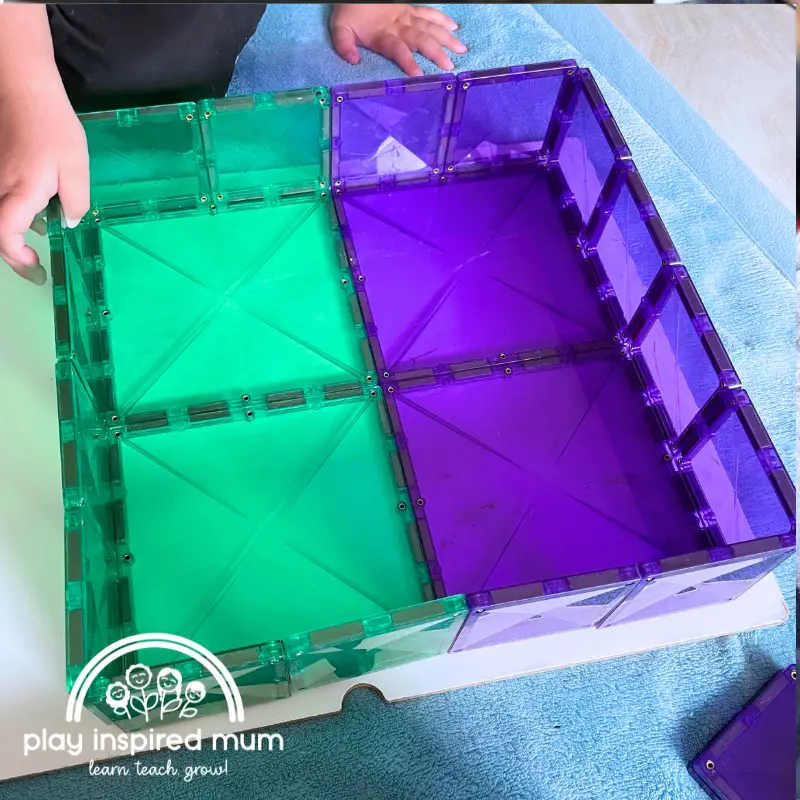

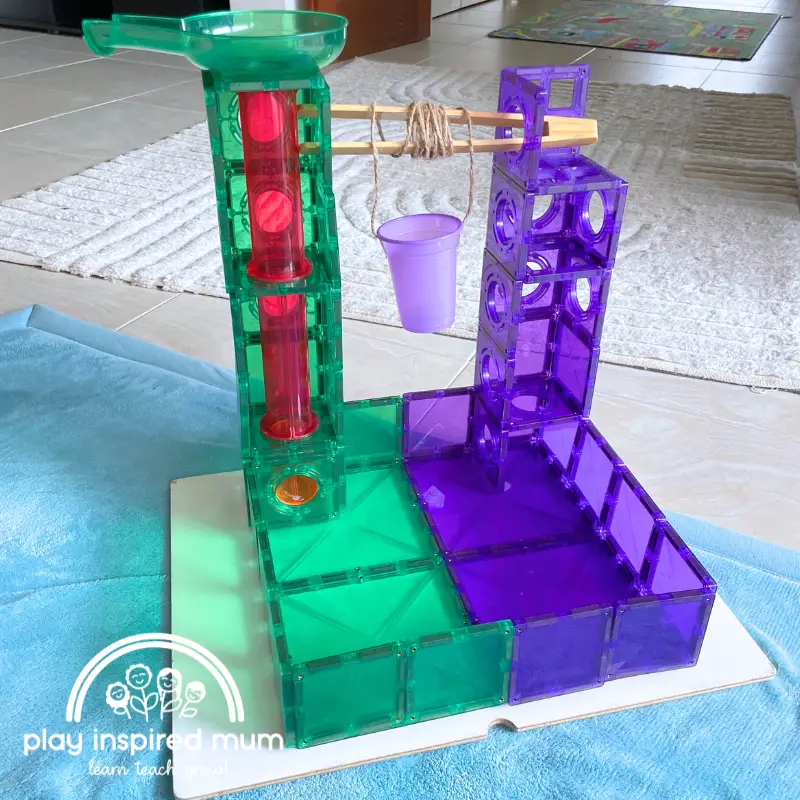
What is a pulley?
Traditionally, a pulley is a machine that’s basically a wheel with a groove or rim around it, and a rope, belt, or chain that runs over the wheel.
You can use it to change the direction of a force or to move things around with less effort. That is work smarter, not harder!
So instead of lifting that heavy box with all your might, you can use a pulley to do the heavy lifting for you!
Pulleys are used in all sorts of things like cranes, elevators, sailboats, and even workout equipment.
And if you mix them up with other simple machines like levers and gears, you can create even crazier and cooler machines!
So, in a nutshell, pulleys are like the secret weapons of engineering that can teach you all about physics, mechanics, and problem-solving.

Educational benefits
Pulleys are not just cool machines, but also a great tool for learning.
Using pulleys can introduce children to important concepts in physics and mechanics, like force, motion, and energy.
They can also learn about different types of pulleys and how they can be used to lift or move heavy objects with less effort.
The best part is that pulleys can also help develop important skills, like problem-solving and critical thinking. Children must figure out how to position the pulley and how much force is needed to move an object. It’s like a puzzle that makes their brains work harder!
And when working with pulleys, children often need to collaborate and work together to achieve their goals.
This can help them develop communication and social skills too.
So, using pulleys in learning is not only informative but also a fun and engaging way to learn science, math, and engineering.
